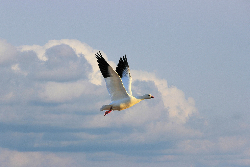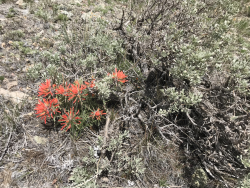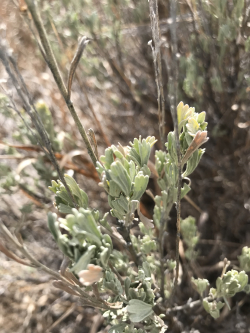
Courtesy Pixabay, wnk1029, contributor and photographer
As we stepped out onto the beach to get a closer look at the birds bobbing on the salt water and to set up the birder’s favorite tool, a spotting scope, the dark grey sand under our feet sprang to life with a gentle buzz. The sand, or what I thought was sand, was actually a shoal of brine flies, easily numbering in the millions. Surprised by our discovery and shorebirds completely forgotten for the moment, we walked slowly along the shore, and with each step, a cloud of flies jumped up to avoid our footfalls, gently settling back down behind us as we walked on.
Brine flies, which are small flies in the genus Ephydra, are a common occurrence around the lake. These gentle flies do not bite, and as adults, they don’t even have mouth parts to feed with. Much like mayflies, they only live a few days as adults, with the goal of reproducing and laying their eggs back in the waters of Great Salt Lake to start a new generation of flies.
Similar to an aquatic caterpillar, their larval stage lives in the briny waters of Great Salt Lake, feeding mostly on algae and other organic matter. At their peak population around Great Salt Lake each year, brine flies are estimated to number in the billions, and the skins they shed as they emerge from the water as adults pile up on the shore in incomprehensible numbers.
As such an abundant insect around the lake, they provide critical food for all manner of creatures. Our momentarily forgotten shorebirds are avid predators of brine flies, and, hungry from migration, these birds snap up brine flies by the thousands. Phalaropes, stilts and sandpipers are just a few of the bird species that feast on brine flies. Gulls love to feast on brine flies, and in silly gull fashion, go about chasing them up and down the beaches with open beaks and loud wails. Remarkably, for eared grebes, brine flies can make up 40 percent of their diet, while the remainder usually consists of another Great Salt Lake denizen, the brine shrimp.
Birds aren’t the only ones that rely on brine flies for food. Spiders, like the ones keeping us company in the Antelope Island bushes, as well as beetles and other invertebrates, feast on brine flies too. In fact, as scientists say, brine flies are an important part of our Great Salt Lake ecosystem. Walking slowly along the shore with my eyes pointed down toward the great clouds of brine flies at my feet, it was easy to see how their sheer numbers could feed an army of critters.
As someone who spends most of my time thinking about birds that eat fish and how to study them, I’m not one to trouble myself with thoughts about insects often, but thinking back on that remarkable July afternoon and the struggling health of our Great Salt Lake, I can’t help worry a little for the future of our gentle brine flies.
I’m Aimee Van Tatenhove, and I’m wild about Utah.
Credits:
Images: Courtesy Pixabay, Antelope Island in the Great Salt Lake, wnk1029, contributor and photographer, https://pixabay.com/photos/antelope-island-great-salt-lake-lake-2659982/
Sound: Courtesy & Copyright Aimee Van Tatenhove
Text: Aimee Van Tatenhove, USU Department of Biology, Utah State University
Additional Reading: Lyle Bingham, Bridgerland Audubon Society
Additional Reading
Pieces by Aimee Van Tatenhove on Wild About Utah
Brine Flies, Great Salt Lake Ecosystem Program, Utah Division of Wildlife Resources, State of Utah, September 01 2021, https://wildlife.utah.gov/gslep/wildlife/brine-flies.html
McPherson, Mia, Great Salt Lake Brine Flies – Important Food Source For California Gulls, OnTheWingPhotography.com, July 14th, 2018, https://www.onthewingphotography.com/wings/2018/07/14/great-salt-lake-brine-flies-important-food-source-for-california-gulls/
Van Elegem, Bernard, Great Salt Lake, Lord of the Flies – Part I, brine flies and bird abundance, June 16, 2015, https://www.bernardvanelegem.com/news/great-salt-lake-lord-flies-part-i-brine-flies-and-bird-abundance
Van Elegem, Bernard, Great Salt Lake, Lord of the Flies – Part II, Cicindela hemorrhagica, June 17, 2015, https://www.bernardvanelegem.com/news/great-salt-lake-lord-flies-part-ii-cicindela-hemorrhagica
Brine Flies scatter as you walk through, Great Salt Lake State Park & Marina, State Parks, Utah Department of Natural Resources, State of Utah, June 11, 2020, https://www.facebook.com/watch/?v=3137388862978108
Great Salt Lake Brine Flies, Antelope Island State Park, State Parks, Utah Department of Natural Resources, State of Utah, https://youtu.be/pktAdULIdZk
Brine flies abound around Great Salt Lake in the summer. As far as insects go, these are some of the “good guys”







